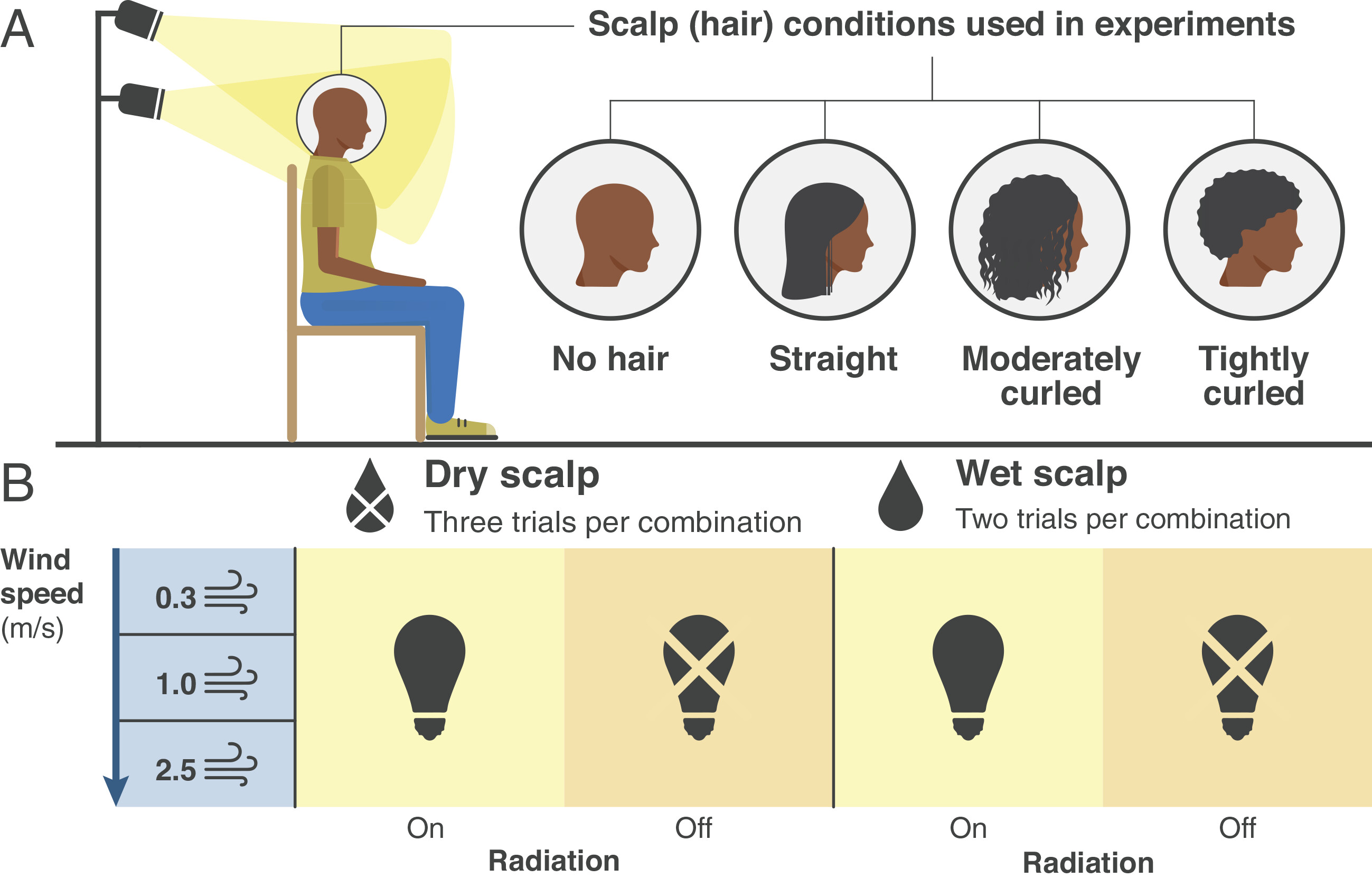2023-06-07 ペンシルベニア州立大学(PennState)
◆研究者は、さまざまな髪質が太陽放射熱からの熱収獲にどのように影響を与えるかを調べるために、熱マネキンと人工毛ウィッグを使用しました。研究結果によれば、くせ毛は人間が涼しく保ちながら太陽放射熱からの保護を最も効果的に提供し、発汗の必要性を最小限に抑えます。
◆この研究は、人間の髪が進化する過程で重要な役割を果たし、人類が危険な状況にさらされずに髪が進化した方法についての理解を深めるための重要な結果を提供します。
<関連情報>
- https://www.psu.edu/news/research/story/life-air-conditioning-curly-hair-kept-early-humans-cool/
- https://www.pnas.org/doi/10.1073/pnas.2301760120
体温調節の適応としてのヒトの頭髪 Human scalp hair as a thermoregulatory adaptation
Tina Lasisi, James W. Smallcombe, W. Larry Kenney, Mark D. Shriver, Benjamin Zydney, Nina G. Jablonski and George Havenith
Proceedings of the National Academy of Sciences Published:June 6, 2023
DOI:https://doi.org/10.1073/pnas.2301760120

Significance
The evolution of human scalp hair might be explained by thermoregulation pressures experienced in hot and arid environments. Bipedal posture and a hairless body may have necessitated the development of scalp hair to minimize heat gain from solar radiation, particularly in hominins with large brains. We used a thermal manikin and human-hair wigs to examine this thermoregulatory hypothesis. We confirm that scalp hair reduces heat gain from solar radiation and find an effect of hair morphology. Our results show that tightly curled hair provides the most effective protection for the scalp against solar radiation, while minimizing the need for sweat to offset heat gain.
Abstract
Humans are unique among mammals in having a functionally naked body with a hair-covered scalp. Scalp hair is exceptionally variable across populations within Homo sapiens. Neither the function of human scalp hair nor the consequences of variation in its morphology have been studied within an evolutionary framework. A thermoregulatory role for human scalp hair has been previously suggested. Here, we present experimental evidence on the potential evolutionary function of human scalp hair and variation in its morphology. Using a thermal manikin and human hair wigs at different wind speeds in a temperature and humidity-controlled environment, with and without simulated solar radiation, we collected data on the convective, radiative, and evaporative heat fluxes to and from the scalp in relation to properties of a range of hair morphologies, as well as a naked scalp. We find evidence for a significant reduction in solar radiation influx to the scalp in the presence of hair. Maximal evaporative heat loss potential from the scalp is reduced by the presence of hair, but the amount of sweat required on the scalp to balance the incoming solar heat (i.e., zero heat gain) is reduced in the presence of hair. Particularly, we find that hair that is more tightly curled offers increased protection against heat gain from solar radiation.



